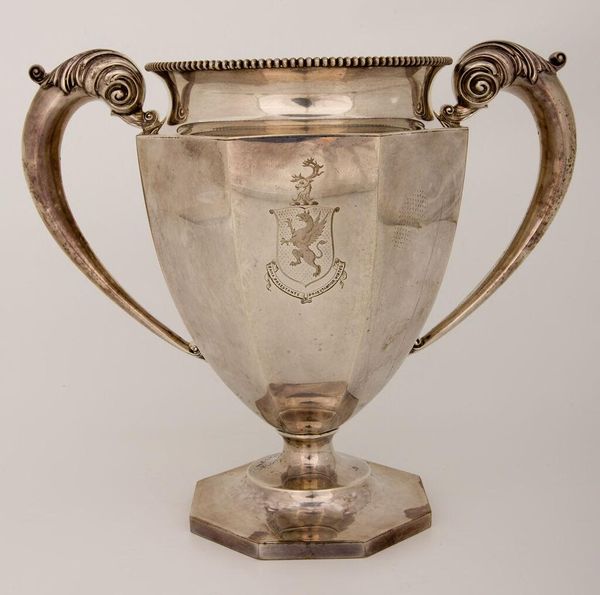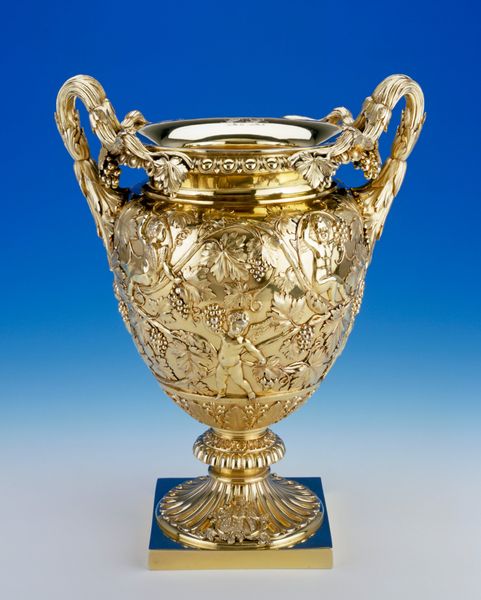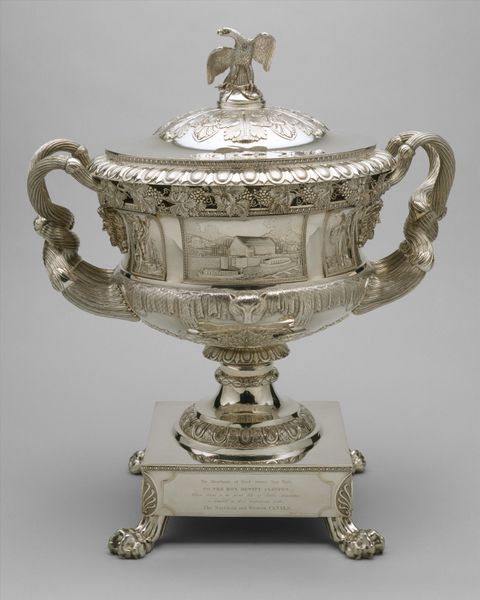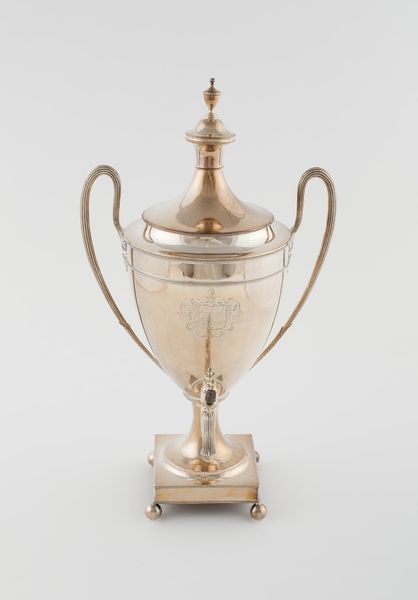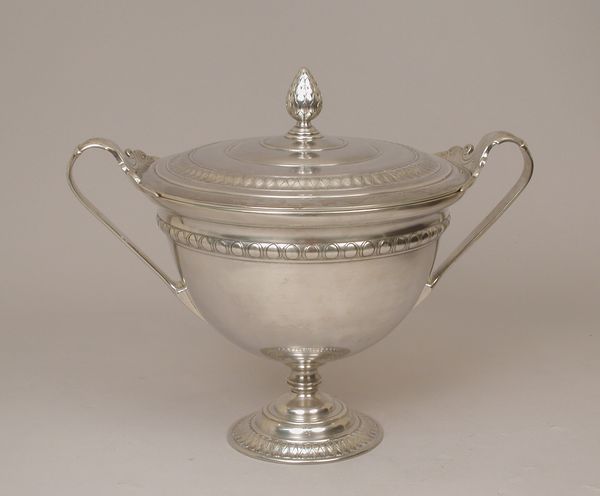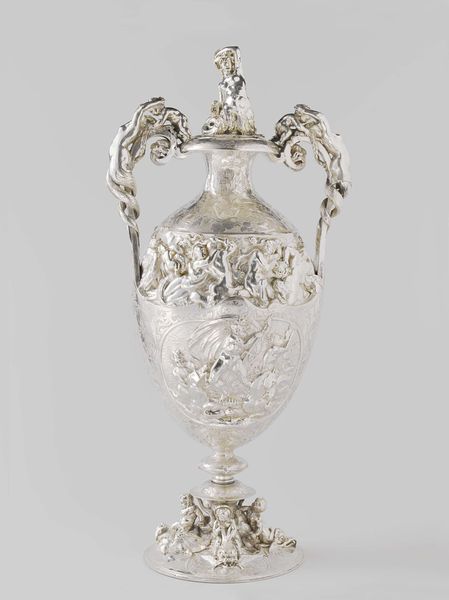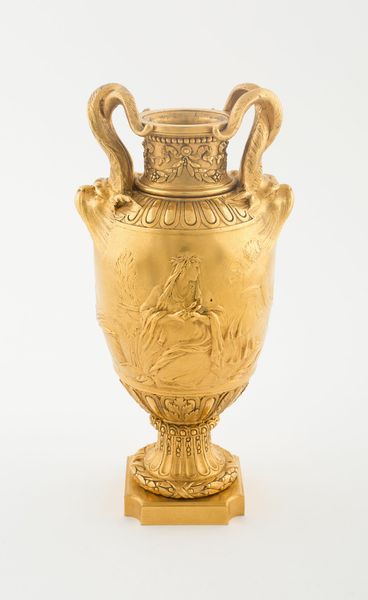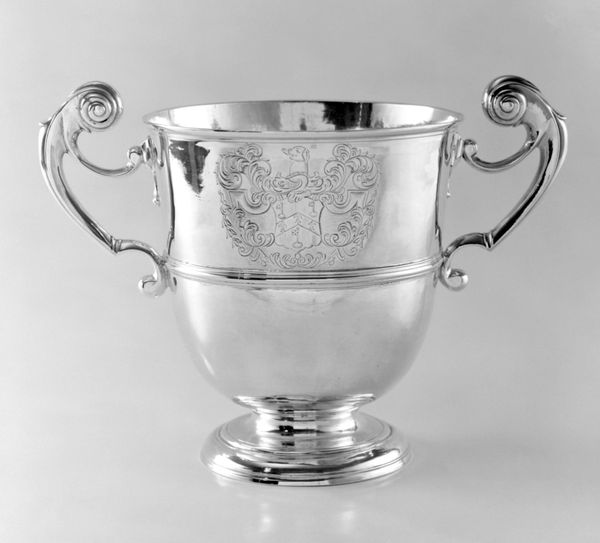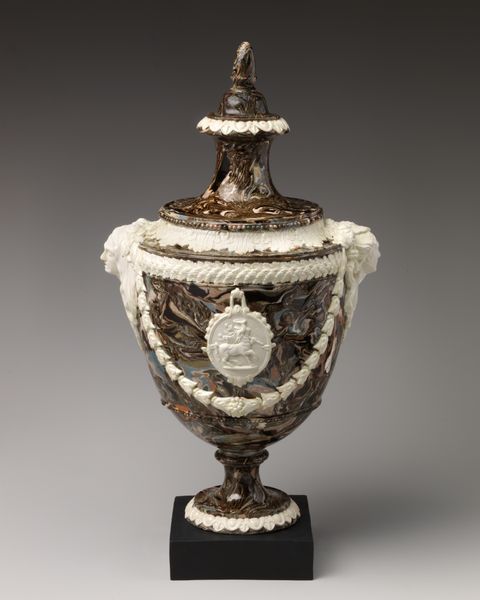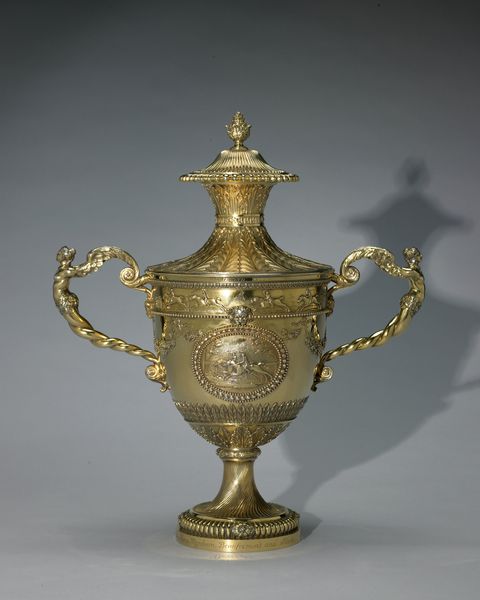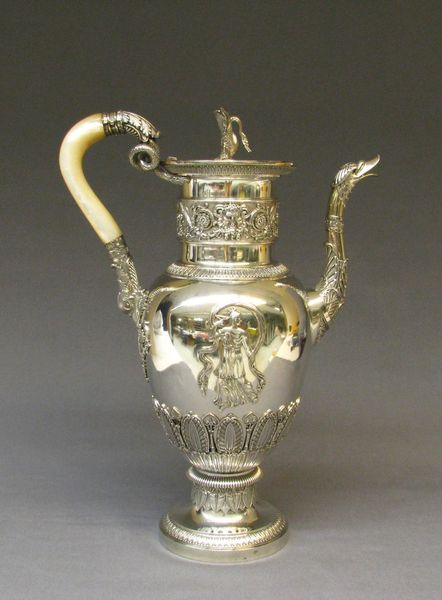
silver, sculpture
#
silver
#
sculpture
#
sculpture
#
decorative-art
#
rococo
Dimensions: Overall: H. 9 5/8 x W. 7 1/2 x D. 3 5/8 in. (24.4 x 19.1 x 9.2 cm)
Copyright: Public Domain
Editor: Here we have a silver ewer created by Friedrich Schwestermuller II, dating from around 1738 to 1750. It's such a striking piece of Rococo decorative art. I’m intrigued by how it seems to embody luxury. What social statements were artists making with objects like this? Curator: That's a crucial question. In examining objects like this ewer, we can begin to unravel the complex interplay of power, class, and consumption in 18th-century society. How do you think objects like this reflected gender roles and power structures of the time? Editor: Well, it feels like a symbol of wealth and domesticity, maybe signaling a woman's role in managing a luxurious household. Does the Rococo style, with all its ornamentation, specifically point to that? Curator: Exactly! The Rococo style, which is a deliberate shift from the classic Baroque, signifies aristocratic power, the kind that thrived off excess. But consider the labor. This wasn’t made by a single artisan; it was likely a workshop product. How might understanding its production shift our perception of it? Editor: So, we see the extravagance on the surface, but underneath is a system built on labor and potentially inequality. Curator: Precisely. Now, knowing its purpose – as a water pitcher – does that affect your understanding, especially knowing the cleanliness issues of the period and restricted access to water among the masses? Editor: It adds another layer, because we're dealing with something both essential and highly decorative, underscoring the contrast between classes. Curator: It makes you wonder whose thirst was really being quenched by this ewer, doesn’t it? Editor: Absolutely. Seeing it as more than just a pretty object really reframes its purpose. I guess art from every period can offer an important reflection on contemporary issues of the day.
Comments
No comments
Be the first to comment and join the conversation on the ultimate creative platform.
